It is impossible to resist the desire to buy this charming plant as a gift for the holiday, when there is a sale in stores. Primrose room - a beautiful flower. Knowing the features of care, you can grow it for many years, spending money to buy only once.
Material Content:
Types and varieties of flowers
This plant from the family of Primrose is represented in nature by several hundred species. Among them are annuals and perennials.
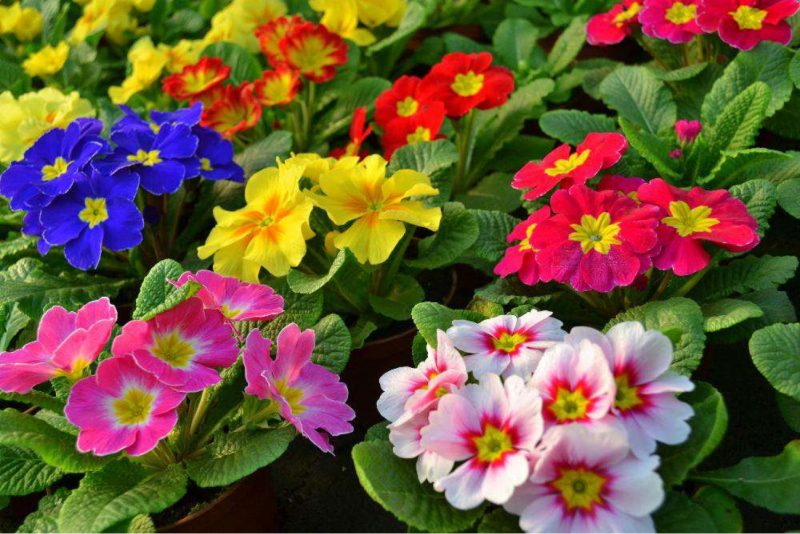
In decorative floriculture, the following types are popular:
- Primrose obkonika. This species is suitable for indoor cultivation. A perennial bush about half a meter high has rounded leaf plates on long stalks. The fragrant flowers of primrose with a diameter of about 4 cm are painted in pink, lilac, snow-white, red or blue. The varieties Libre Magenta and Libre White have been awarded the Royal Horticultural Society of Great Britain.
- Primrose Kew. Annuals are about 30 cm tall, with roundish leaves up to 20 cm long. Small fragrant flowers are collected in inflorescences-umbrellas. The only variety that has yellow flowers.
- Primrose is Chinese. Perennial with a rosette of leaves, plant height - up to 35 cm, leaves - up to 15 cm in length, blooms with buds of various colors, which in the center have a yellow spot.
Most often on sale you can find a primrose hybrid, which can only grow in the garden. When grown indoors, it disappears after flowering, you can save it by replanting it on a flower bed.
Growing Features
The temperature of flower growing is low, during winter flowering it is desirable that it is 12 - 15 ° C. In a city apartment, such conditions are difficult to provide. The primrose obkonika feels good at + 18 ° C.Perennial varieties can be planted in the garden in summer, and brought into the room for winter.
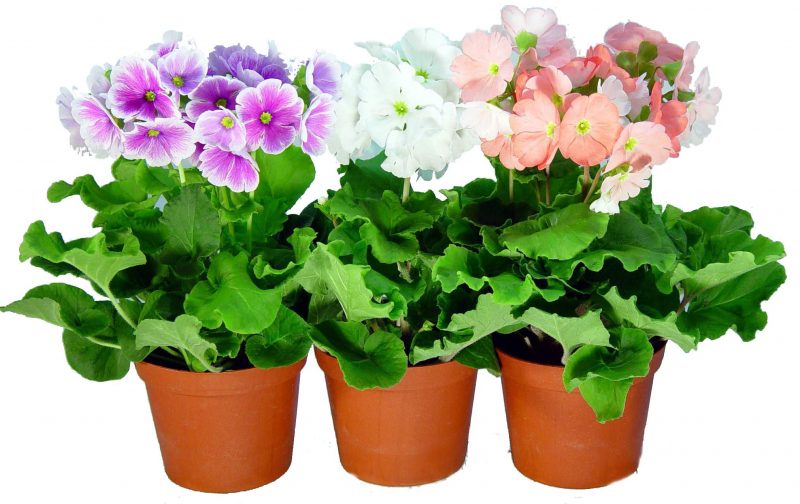
It is necessary to cut off the yellowed leaves and wilted flowers. This will allow the plant to bloom longer, since the forces will not be spent on setting seeds.
Primrose loves bright light. It is necessary for plants especially in winter, during flowering. In summer, on the southern windows, you need to ensure that the flower does not overheat, it does not tolerate air temperature above + 24 ° C.
Abundant watering in winter distinguishes primrose from other plants that need at this time in relative or complete rest. It is watered with clean, settled water as soon as the top layer of soil in the pot dries. It is advisable to use the water passed through the filter, rain or key - the flowers do not tolerate impurities of chlorine and fluorine.
Home Care
Good care for primrose necessarily includes top dressing. There is a fertilizer called “Gumi Kuznetsova”, “Orgavit” based on horse manure or preparations on chicken manure. Fertilizers designed for violets are well suited for primrose. Preparations that are used for top dressing should contain trace elements - zinc, iron, manganese.
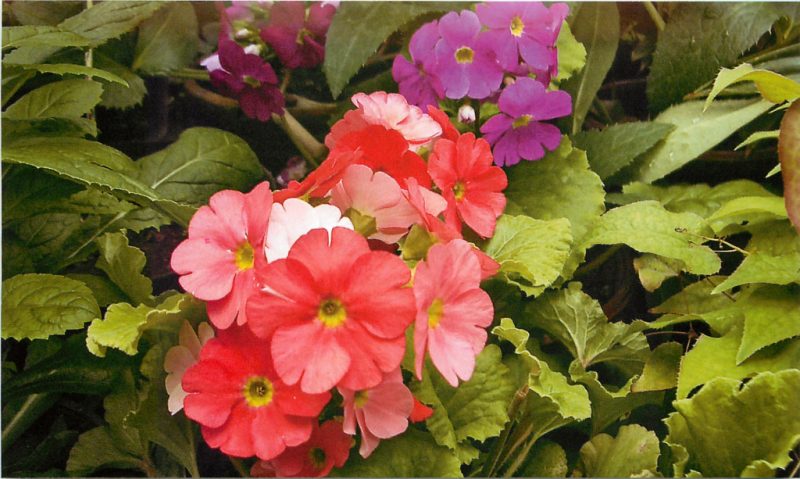
This indoor flower is sensitive to an excess of salts in the soil, so it is advisable to prepare a nutrient solution less concentrated than recommended by the manufacturer. If yellow spots appeared on the leaves, indicating chlorosis, most likely, the soil reaction shifted to the alkaline side and trace elements ceased to be absorbed by the roots. The plant needs to be transplanted, or change the topsoil in the pot. In the future, lemon juice should be added to the water when watering.
Primrose is unpretentious with proper care. After flowering, the plant rests for several months, then you can again stimulate the appearance of flowers. To do this, they begin to feed the primrose with potash fertilizers, for example, potassium humate. It is good to spray a solution of fertilizer on the leaf, especially on the underside of the leaf plate, where nutrients are better absorbed.
Primrose loves humid air. You can spray it from time to time with warm water on the leaves or put the pot on a tray with wet stones.
As it grows, about 1 time per year, the plant is transplanted. The land needs fertile and loose, well-purchased soil designed for violets. You can prepare the planting mixture yourself from universal peat soil, fine gravel and pine bark in a ratio of 2: 1: 0.5.
Pests, diseases and treatment
Primrose at home is more likely to suffer from fungal diseases that cause root rot and leaf wilt. Pest insects rarely inhabit it. Yellow spots on the leaves along the veins can indicate chlorosis. This is due to improper feeding of the plant or irrigation with hard water.
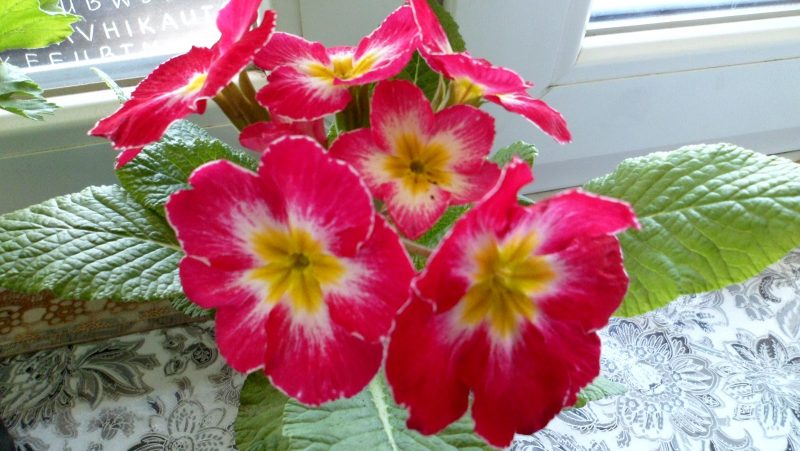
Primrose can also die from the fact that the window sill is very cold. In this case, after watering, the roots do not absorb water well and can rot. In wet, cold soil, fungal infections develop faster. You can put polystyrene or a plank on a cold windowsill in winter to keep the plant warm.
When the heating is turned off, it is advisable to water the flower with fungicides for prevention.
New plants are quarantined, separate from other indoor flowers. To leave the primrose bought at the store, it is sprayed and watered with “Fitosporin” several times with a difference of 10 days.
How to propagate primrose indoor
Propagate the plant by dividing the bush during transplantation or by seed. The second method is more complicated; it requires patience and knowledge. Plant seeds quickly lose their germination, this must be taken into account when purchasing them in a store.

Growing most primroses from seeds requires stratification. Sowing order:
- in plates filled with universal soil and vermiculite (in equal parts), spread the seeds;
- sprinkle them on top with a layer of soil about 2 mm;
- place the containers in a bag and put in the freezer;
- at a temperature of –12 ° C the seeds are stored in the freezer for a month;
- after a month, the containers are removed from the refrigerator and placed on the windowsill, in the shade;
- moisturize the soil from the spray gun and air the seeds 2 to 3 times a day;
- germination temperature should not be higher than + 18 ° C;
- when the seeds germinate, the container is transferred to a well-lit, warm place (+ 20 ° C).
Seedlings are watered and fed during distillation, like adult plants. Dive it in separate pots a month after emergence.
Read also:bougainvillea at home
Possible problems when growing a houseplant
Due to errors in care leaves and flowers wither, buds fall off. Fertilizers and growth stimulants will not help when the plant begins to fade in moist soil. This suggests that his roots are diseased and he needs treatment with fungicides, for example, Fitosporin, Maxim, or Fundazol.
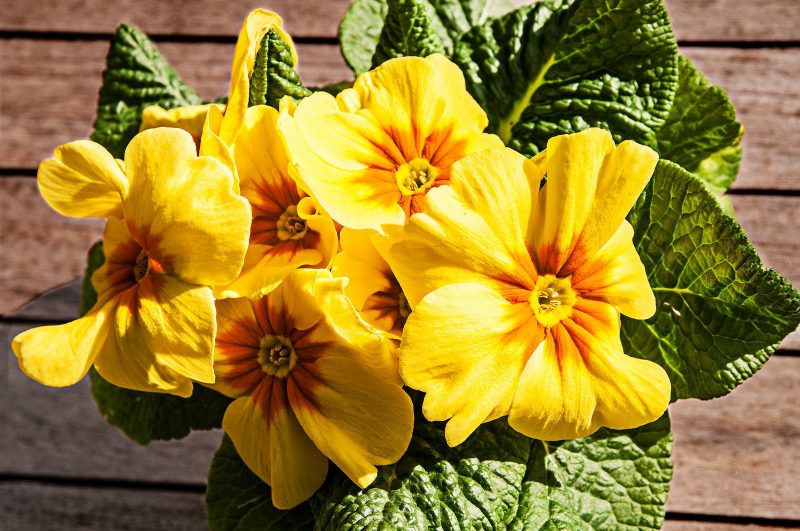
The treatment must be repeated several times so that the plant is fully recovered. When the leaves cease to fade, and new ones begin to appear, we can assume that the plant is already healthy. As a prophylaxis, Fitosporin is useful even for healthy plants - it will maintain their immunity and prevent fungal infections from developing in the soil.
If the air in the room is too dry, dark spots appear on the ends of the leaves, buds are few or they fall. In this case, spraying the leaves will help the plant.
The abundance of large leaves and weak flowering suggests that there is a lot of nitrogen in the fertilizer or primrose is in a room where there is too little heat and little light. High air temperatures also contribute to bud dropping. To remedy the situation, the primrose is rearranged on a cool, bright window sill or taken out onto a heated loggia.












